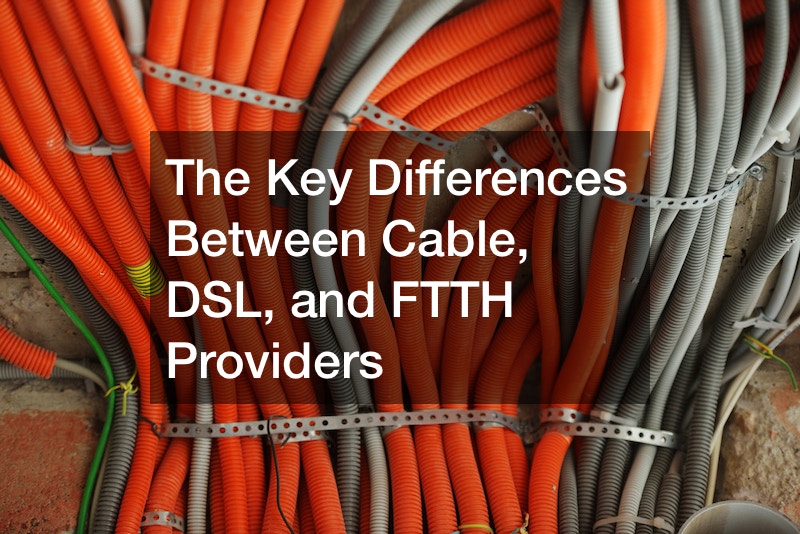The Key Differences Between Cable, DSL, and FTTH Providers


Have you ever wondered how your connection to the Internet works? The video gives excellent insight into the three types of Internet connection: cable, DSL, and fiber.
Broadband cable is a high-speed access technology that uses a cable modem with an attached coaxial cable which provides a link to the Internet service provider. The latter tend to offer both Internet and cable television to their customers. They leverage existing infrastructure from cable TV to cover large geographic areas. The main downside of cable is that you must share Internet bandwidth with others.
This can lead to a slowdown in Internet speeds during peak hours.
DSL stands for Digital Subscriber Line. DSL carries both voice and data over telephone lines. This is done through a modem. DSL differs from the old dial-up connections in that it is much faster. This kind of connection is not as fast as cable, but it is cheaper and you will not have to share bandwidth.
Fiber offers the fastest Internet speeds available today. FTTH providers use light to send data through fiber optic cable. This type of connection can travel longer distances than DSL or cable. The two latter use electrical signals to send data through copper wires, which can be affected by electromagnetic interference. Now you know the main differences between cable, DSL, and fiber Internet connections.
.
